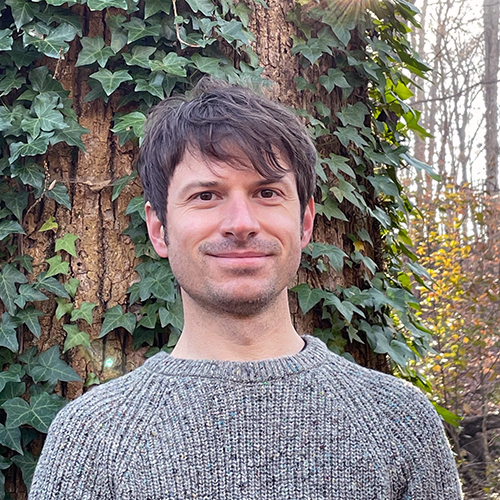Josh Strable
Associate Professor
Molecular and Structural Biochemistry Department, NC State
Polk Hall 152
Bio
Research Program Overview
We promote an inclusive, responsible and creative environment where two fundamental questions in plant developmental biology motivate our research: what are the factors that determine plant architecture and how do these factors regulate plant shape? In crop and wild species, leaf structure affects light capture and plant density, and inflorescence and floral forms directly impact yield through the number and arrangement of seed/grain-bearing structures. Despite such agricultural and ecological significance, there remain many exciting and open questions regarding the genetic and molecular mechanisms that regulate plant architecture.
Unlike animals, plants have the remarkable ability to initiate new organs throughout their life. All plant organs develop from active, pluripotent stem cell tissues called meristems. Plant shape is largely determined by meristem activity, as well as growth and patterning of the organs they produce. Our research aims to understand genetic mechanisms that regulate meristem function, and those that underlie development of vegetative and reproductive organs. In parallel, we are interested in how developmental pathways interpret environmental signals to modulate or coordinate growth, especially when under abiotic stress.
We leverage natural diversity as well as mutants in maize and related cereals to study development. Our research utilizes an array of techniques, including forward and reverse genetics, light and scanning electron microscopy, molecular biology, genomics, single cell -omics and gene editing. We work as a team to address two main questions 1) how does the hormone ethylene regulate maize growth, development and stress response, and what are the genomic features of the ethylene pathway; and 2) how do boundary genes regulate meristem activity, pattern organs and/or control growth to modulate plant architecture.
Publications
Education
B.S. Biological Sciences University of Iowa
M.S. Biological Sciences University of Iowa
Ph.D. Plant Biology University of Iowa
NSF Postdoctoral Fellow Cornell University
Publications
- A maize semi-dwarf mutant reveals a GRAS transcription factor involved in brassinosteroid signaling , PLANT PHYSIOLOGY (2024)
- Development and maintenance of the ligular region of maize leaves , MOLECULAR PLANT (2024)
- Cytoplasmic male sterility and abortive seed traits generated through mitochondrial genome editing coupled with allotopic expression of atp1 in tobacco , FRONTIERS IN PLANT SCIENCE (2023)
- Interspecies transfer of RAMOSA1 orthologs and promoter cis sequences impacts maize inflorescence architecture , PLANT PHYSIOLOGY (2022)
- A pointillist portrait of maize leaf protoplasts points to bundle sheath polarity and a potentially new path to phloem loading , PLANT CELL (2021)
- An in situ sequencing approach maps PLASTOCHRON1 at the boundary between indeterminate and determinate cells , PLANT PHYSIOLOGY (2021)
- Developmental genetics of maize vegetative shoot architecture , MOLECULAR BREEDING (2021)
- Distinct C-4 sub-types and C-3 bundle sheath isolation in the Paniceae grasses , PLANT DIRECT (2021)
- The arches and spandrels of maize domestication, adaptation, and improvement , CURRENT OPINION IN PLANT BIOLOGY (2021)
- The dynamics of maize leaf development: Patterned to grow while growing a pattern , CURRENT OPINION IN PLANT BIOLOGY (2021)
Grants
Statement of Work: The Strable Lab will contribute to the following aims as indicated below. Aim 1: Foundational analysis of gene expression and chromatin state across the rice SAM/IM We will define single-cell and nuclei gene expression patterns and the chromatin landscapes across rice vegetative and reproductive meristems to provide foundational data for the studies proposed herein as well as for other studies of meristem function. ��������������� Perform single cell RNA sequencing (scRNA-seq) on the SAM and IM of rice to establish spatiotemporal patterns of gene expression in stem cell tissues. ��������������� Characterize the chromatin landscape and in parallel catalog nuclear transcript levels across the SAM and IM using a combined single nuclei (sn)ATAC-seq and snRNA-seq approach. ��������������� Integrate sc/snRNA- and ATAC-seq datasets, along with polymorphisms from GWAS panels, to identify candidate accessible chromatin and cis regulatory elements for yield traits in meristems. Aim 2: Characterize how disruption of cytokinin perception alters rice SAM and IM development. We will explore the spatial aspects of cytokinin signaling and will determine how disrupting cytokinin perception changes the development and transcriptomes of these tissues. ��������������� Determine the expression patterns of the cytokinin HK receptors and complete the development of rice hk mutant series. ��������������� Examine SAM/IM phenotypes in various hk mutants, including the quadruple hk3,4,5,6 mutant. ��������������� Determine the consequence of the hk mutants on gene expression in the SAM/IM, on the distribution of cell types within the SAM/IM, and on the developmental trajectory of the meristem cells. Aim 3: What are the direct targets of the cytokinin-regulated type-B RR transcription factors? We will define the primary targets of cytokinin-regulated type-B RR transcription factors in the SAM and IM and will determine the direct targets of the cytokinin-activated type-B RRs in the SAM/IM tissue. ��������������� We will explore the transcriptome in cells with activated cytokinin signaling by cell sorting based on fluorescence of the TCS:reporter followed by RNA-seq. This will be overlaid on the scRNA-seq data derived on apical meristems. ��������������� Determine the direct targets of the cytokinin activated type-B RRs in the SAM/ IM using ChIP-seq.
